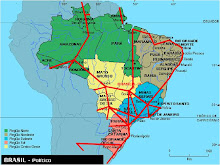New Frontiers for Attracting Investment: Asia and the Middle East
• Lord Brennan • Luiz Fernando Furlan • Javier Santiso• Alessandro TeixeiraChaired by • Kellie Meiman ,Thursday 16 April11.00-12.00
“The era of OECD countries being the centre of the universe is over,” said Kellie Meiman, Managing Director, McLarty Associates, USA, the session moderator. The boom in trade and investment between Latin America, Asia and the Middle East is likely to continue despite the crisis, panellists agreed.
• There is a “historical window of opportunity” for foreign direct investment from Asia and the Middle East into Latin America, said Alessandro Teixeira, President, World Association of Investment Promotion Agencies (WAIPA), Switzerland. Even if global FDI drops 20-30% in 2009, FDI from Asia and Middle East into Latin America will remain strong. “There are brilliant opportunities, not just for mergers and acquisitions, but also for strategic alliances,” Teixeira said.
• “The boom in South-South relations is a major historical shift which the crisis will not stop,” said Javier Santiso, Director and Chief Development Economist, Organisation for Economic Co-operation and Development (OECD), Paris. Santiso added that the shift is not simply in terms of booming trade and investment among different emerging markets, but it also consists of a “major cognitive shift”. He noted that the Bank of China has issued currency swap lines over the past year not just to other Asian countries, but also to Argentina, while many emerging markets have proved to be less volatile destinations for investment than some OECD countries.
• If Latin America is to take advantage of the opportunity offered by investors from Asia and the Middle East, then it must improve infrastructure, education and its legal framework. “You need clear laws on how you can acquire land in foreign countries for long-term use,” said Lord Brennan, Member of the Board, Matrix Chambers, United Kingdom. Latin American schools need to start teaching Asian languages. “Young people in the region must learn that South-South is the future,” Brennan said. Infrastructure projects in the region may prove interesting to international investors, he added, including sovereign wealth funds, which have been increasingly taking a long-term investment perspective.
• The economic reforms and growth opportunities of Latin American countries should be made better known abroad, through summits, conferences and missions. “We have plenty of opportunities in the region, but most countries do not know of them,” said Luiz Fernando Furlan, President, Foundation for a Sustainable Amazon, Brazil.
• Although Latin America’s need for capital, Asia’s need for natural resources and the Middle East’s need for a stable food supply make the three regions complementary economic blocs, opportunities go beyond these three factors. Latin American companies are increasingly investing abroad, while Asian and Middle Eastern companies are investing in services and technology in Latin America. Furlan noted that the positive experiences of several Latin American countries with clean energy projects might also provide an opportunity for further trade with Asia.
Sunday, April 19, 2009
Subscribe to:
Post Comments (Atom)


No comments:
Post a Comment